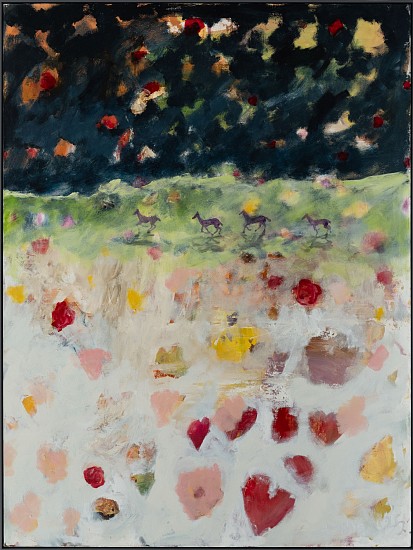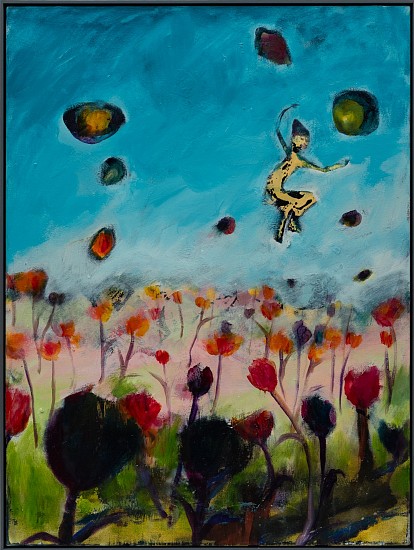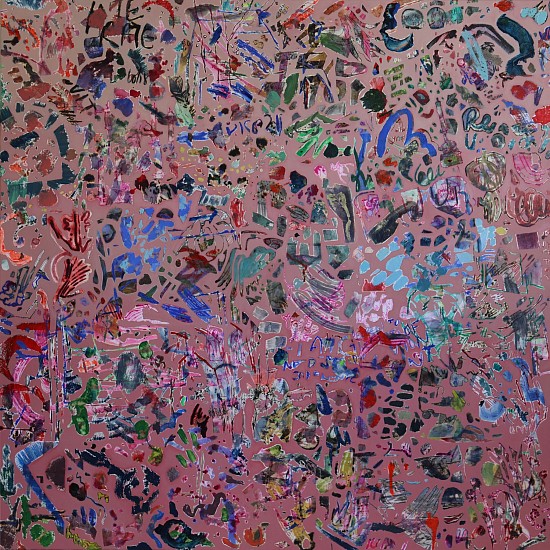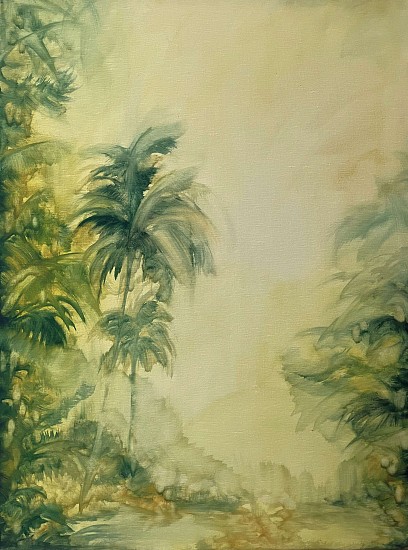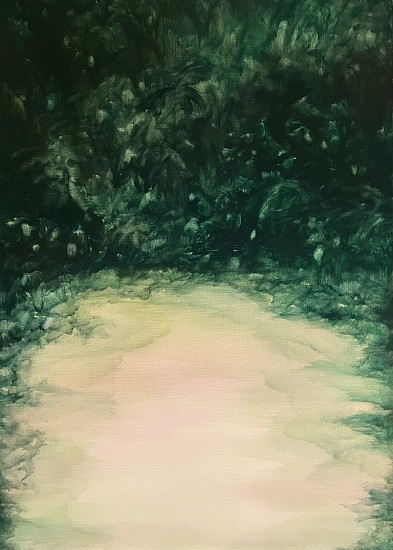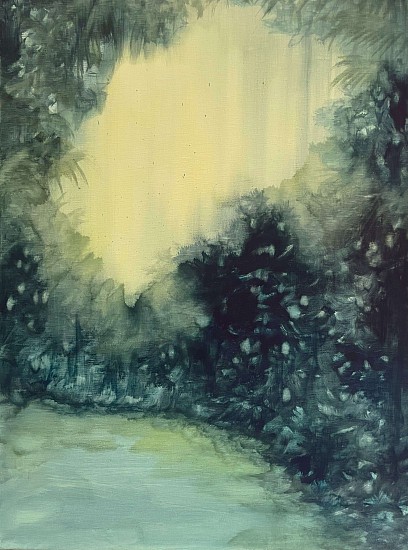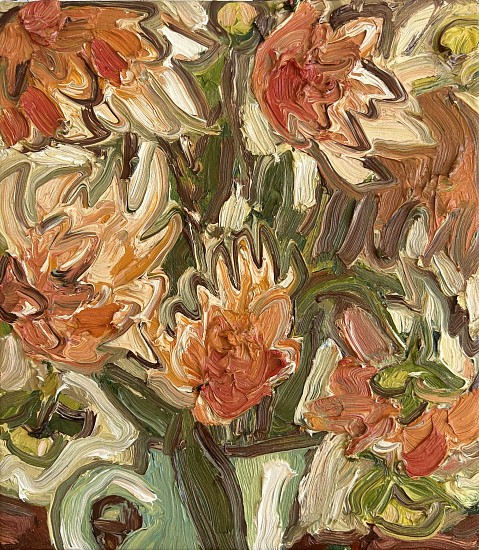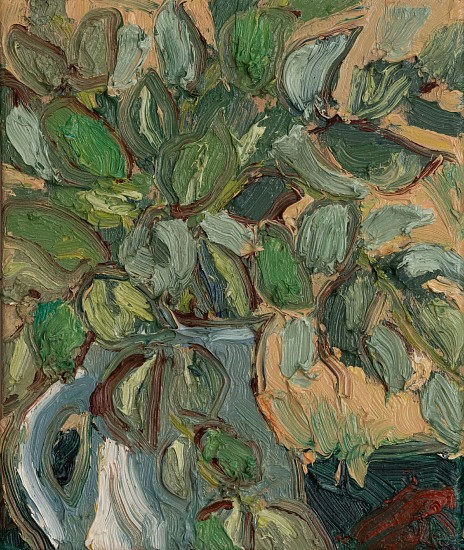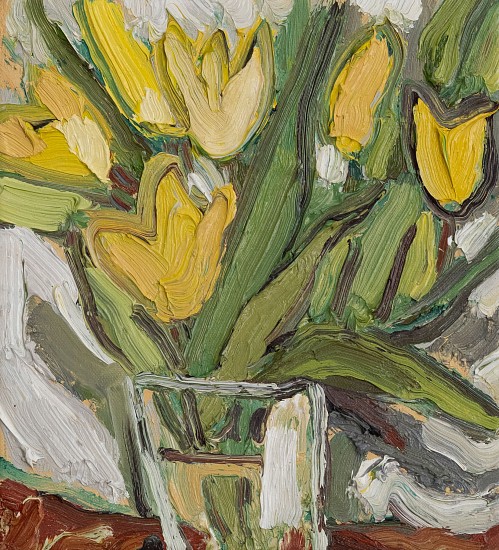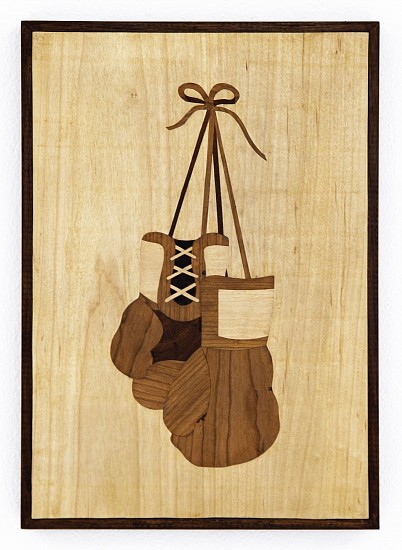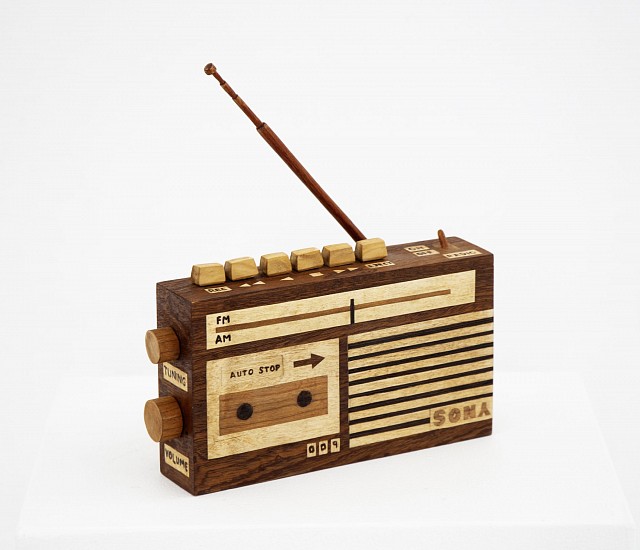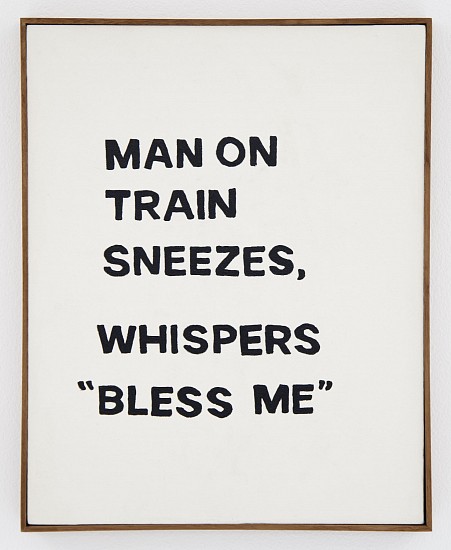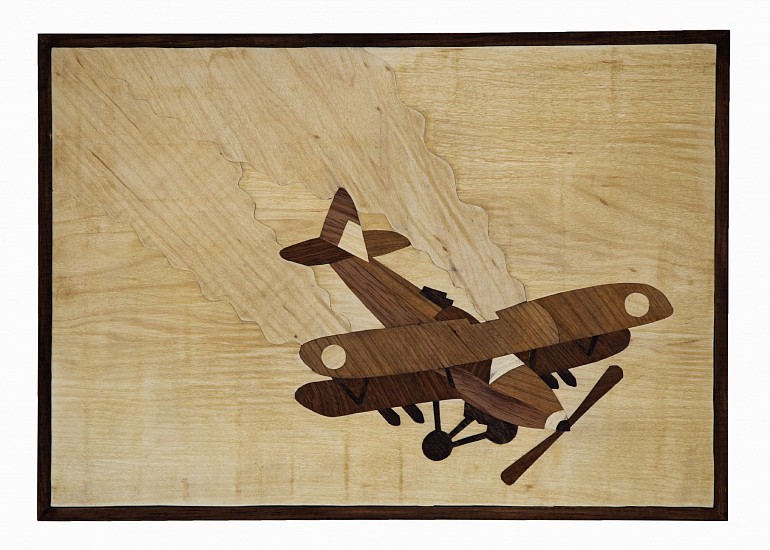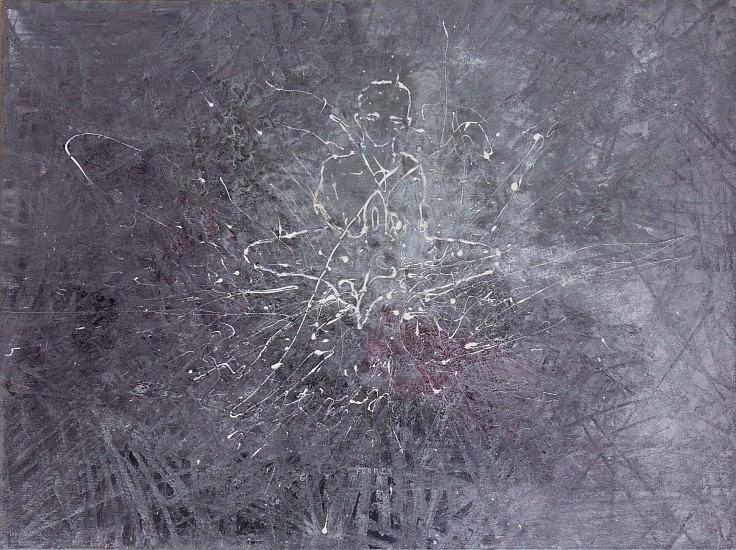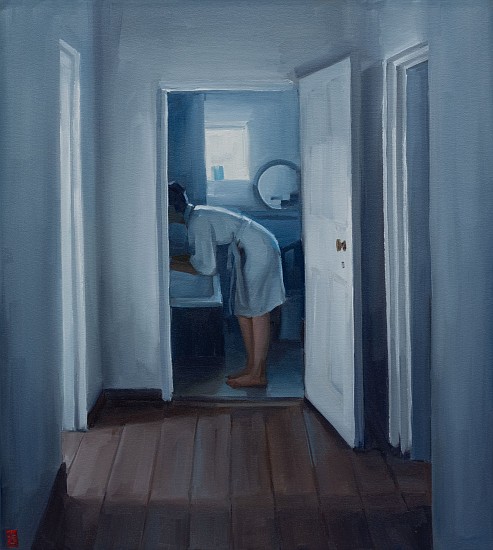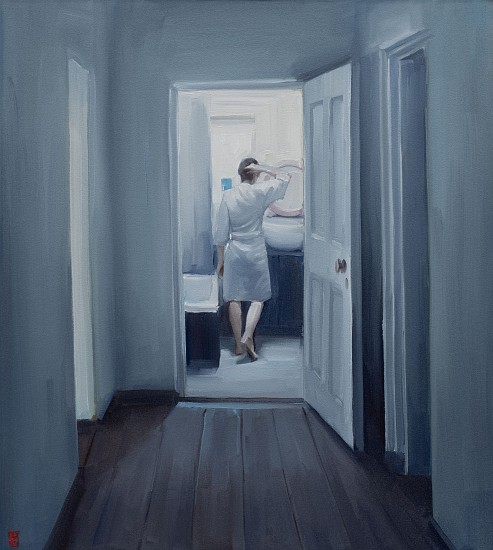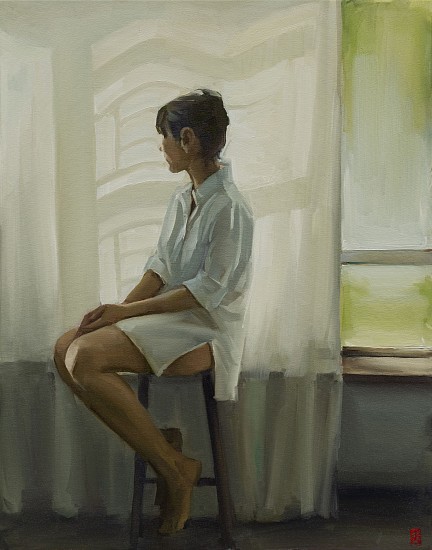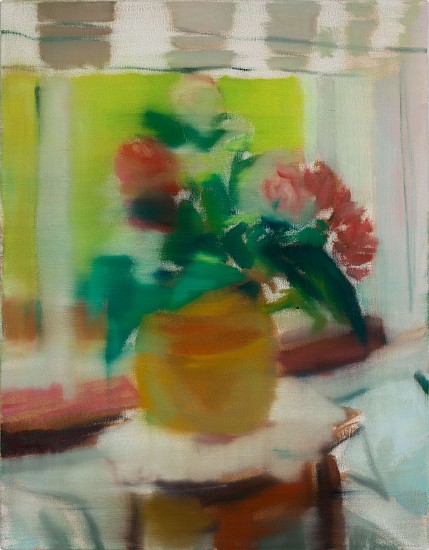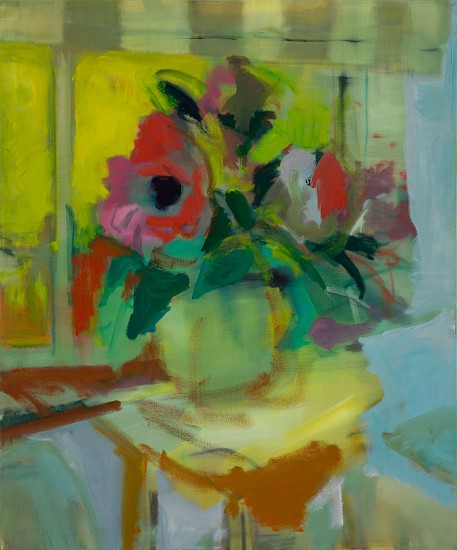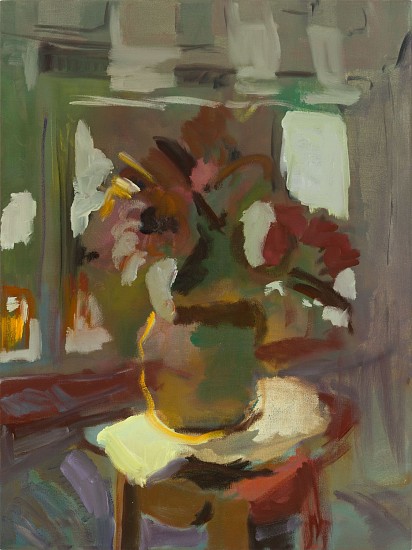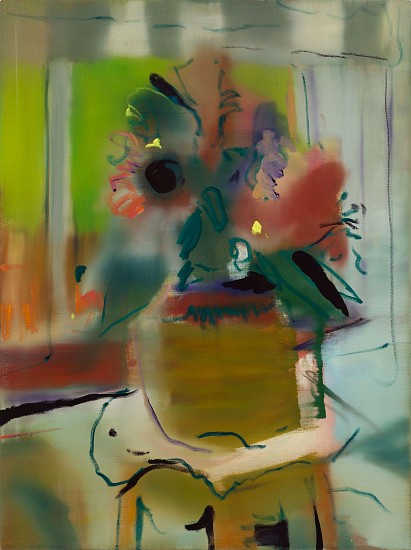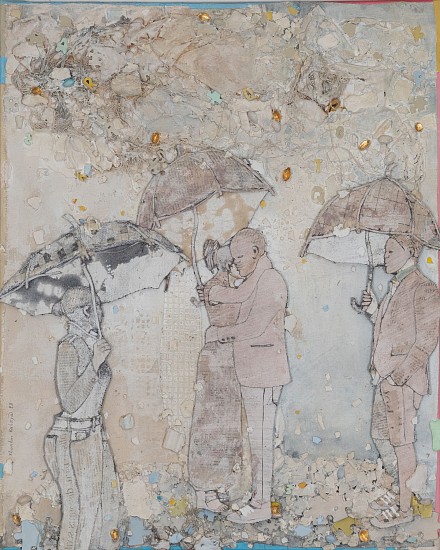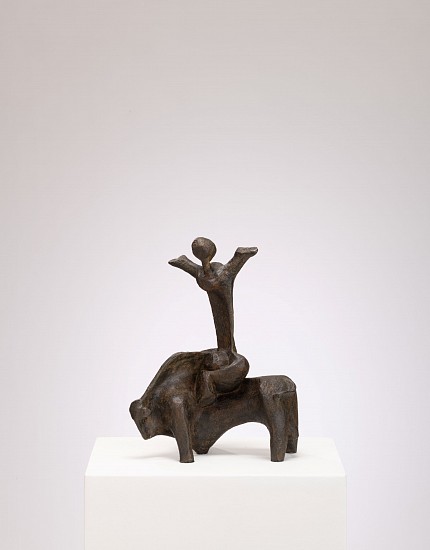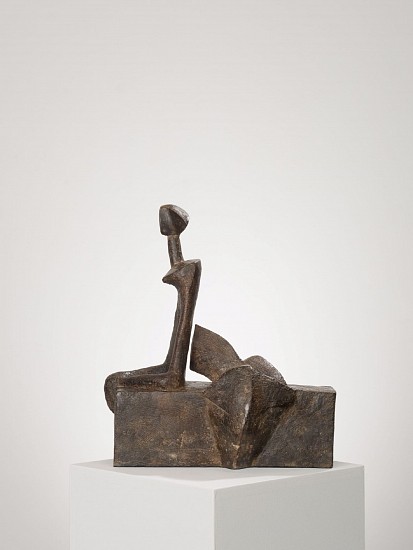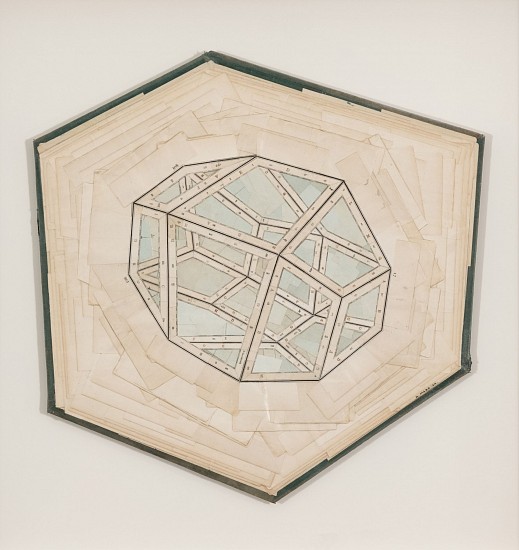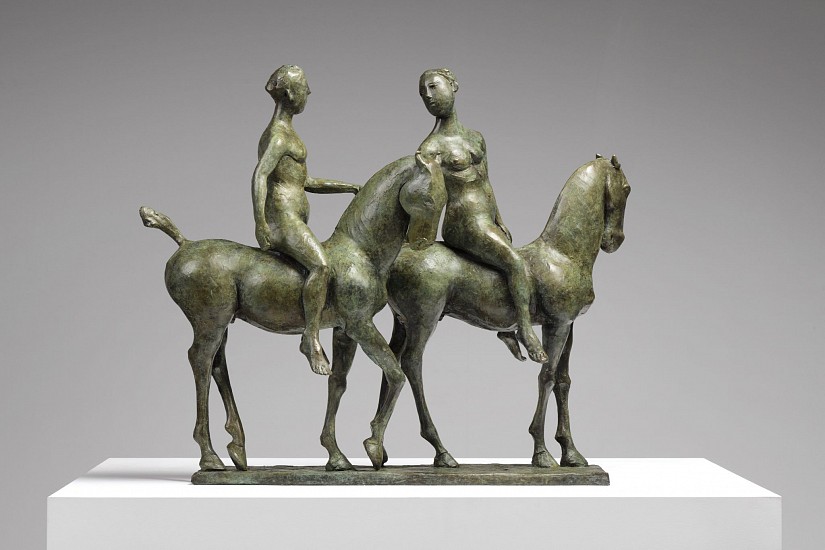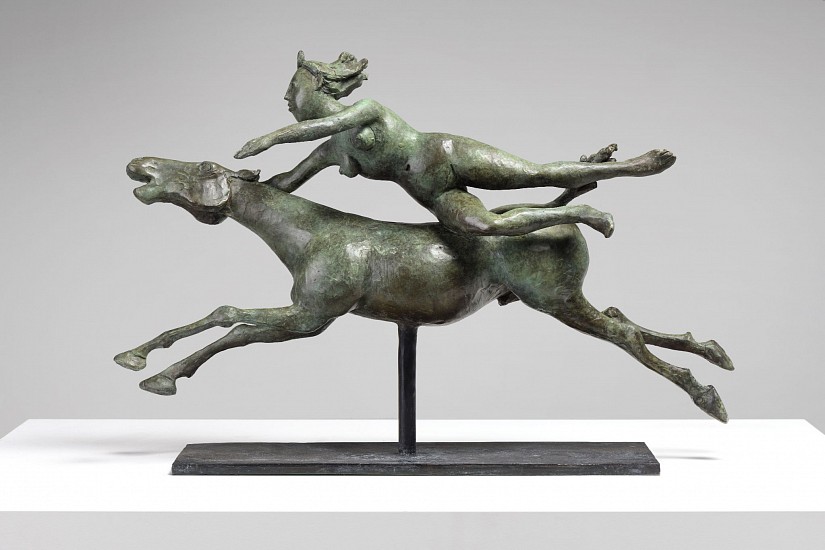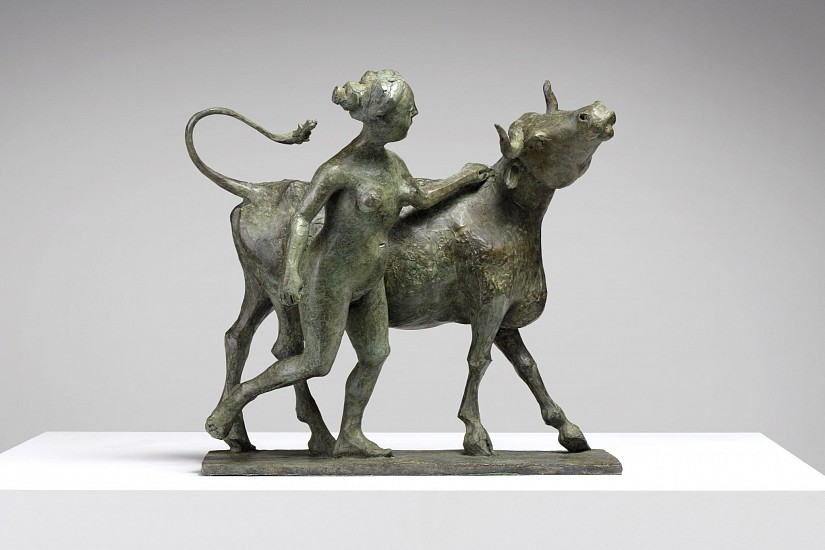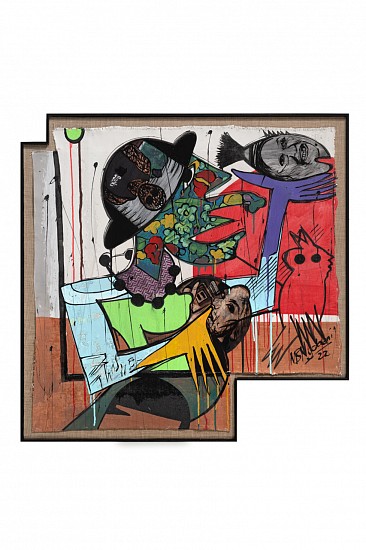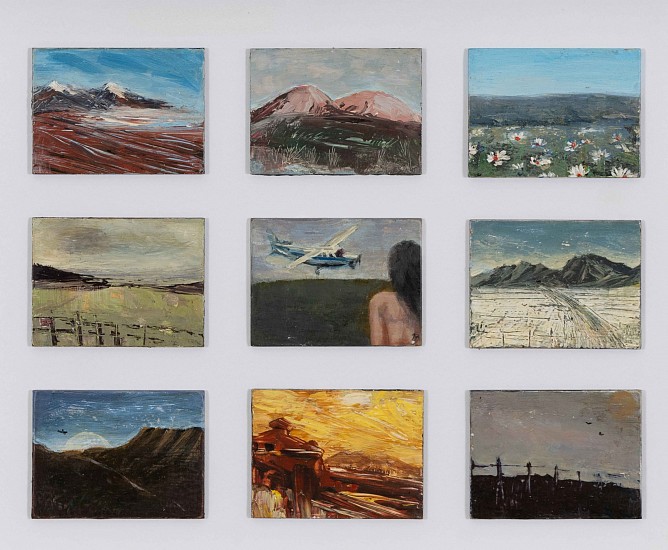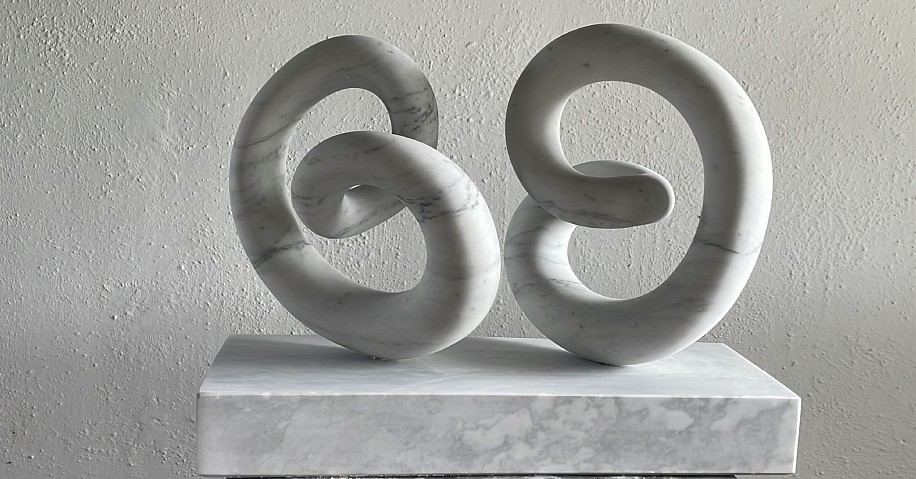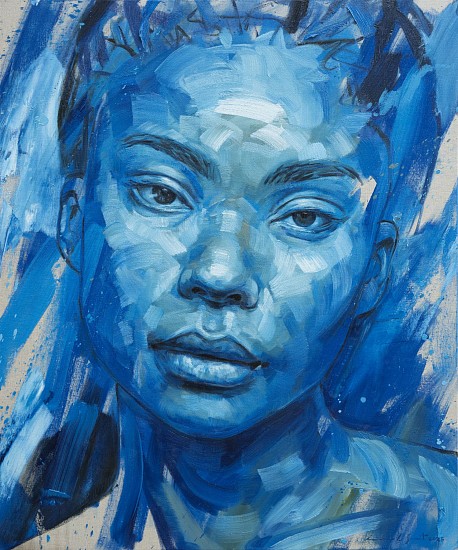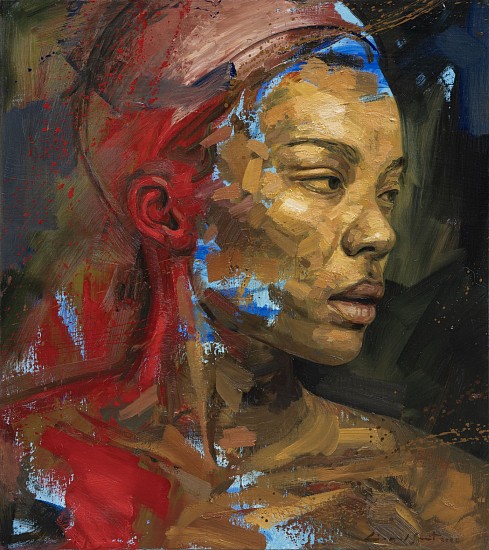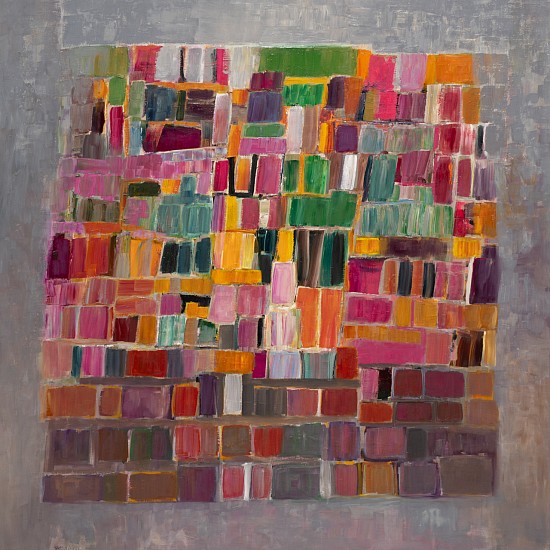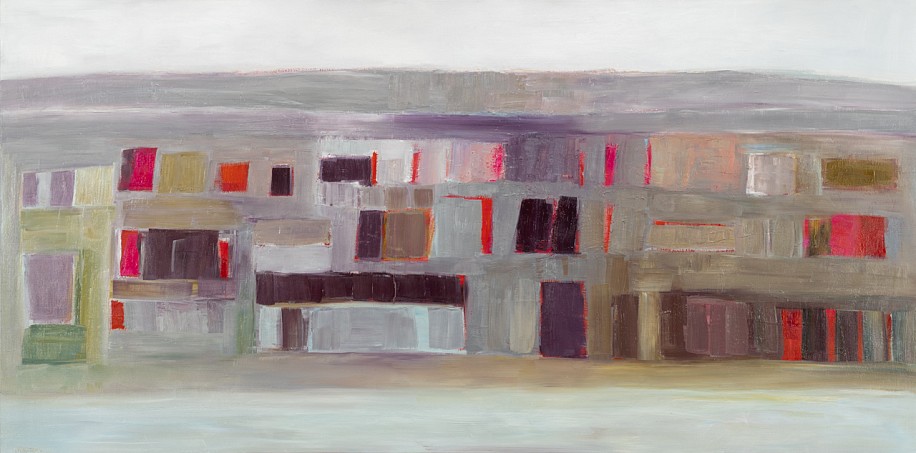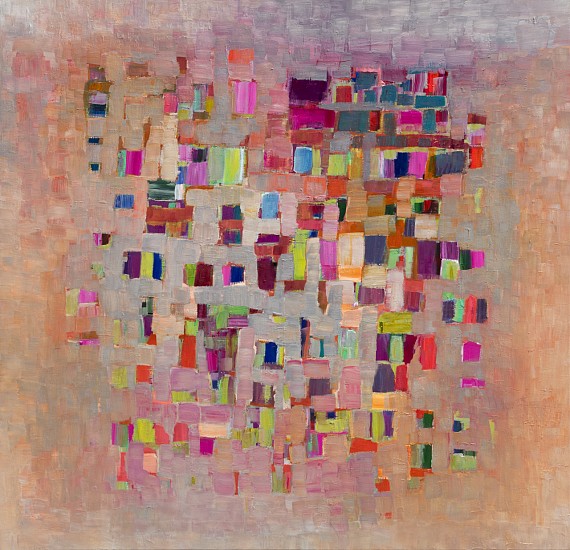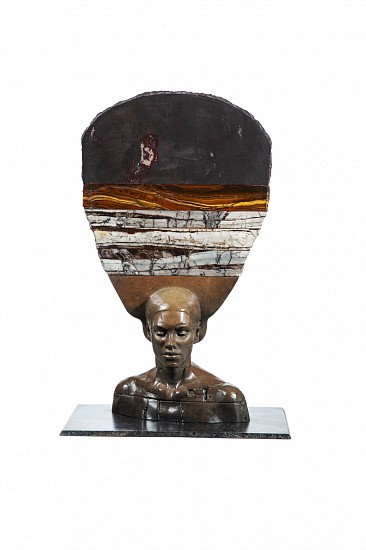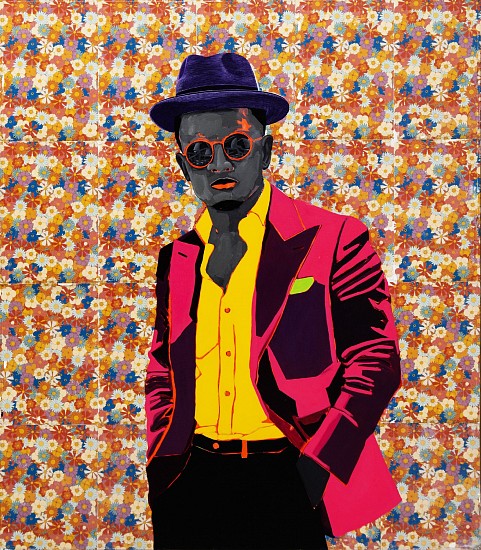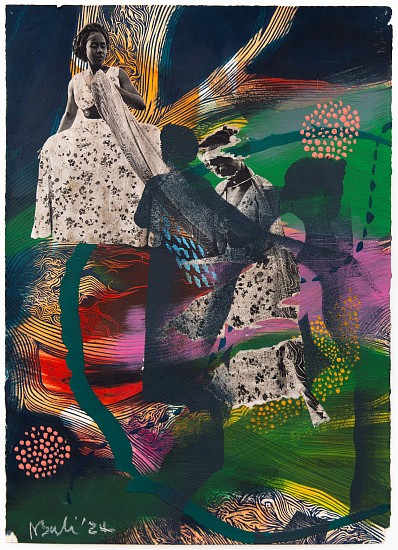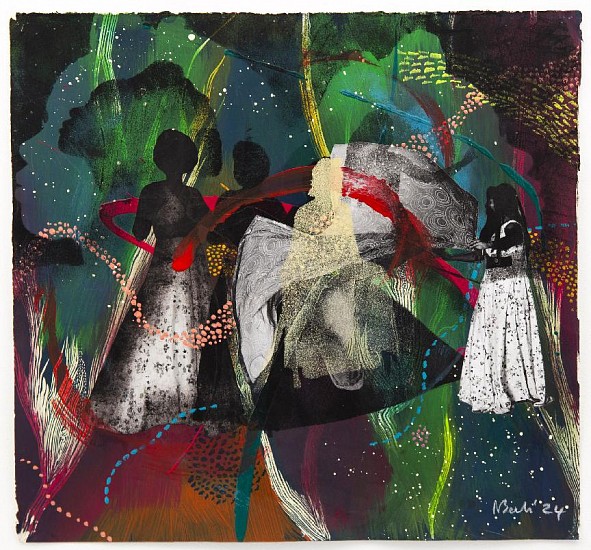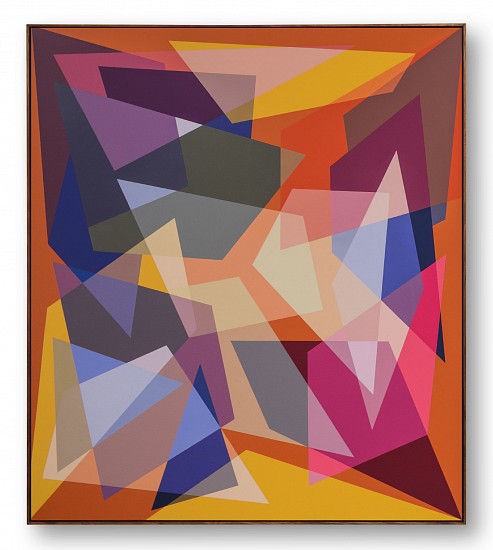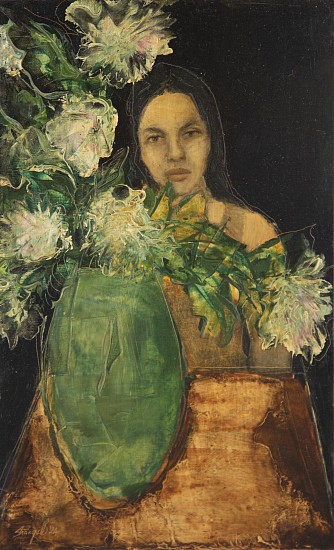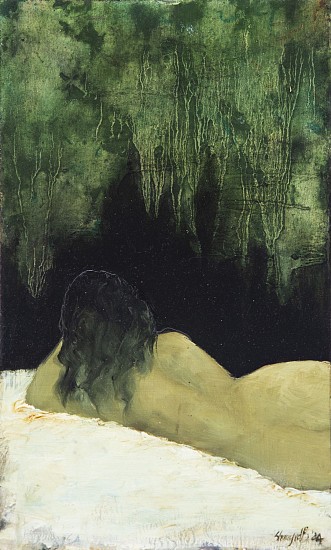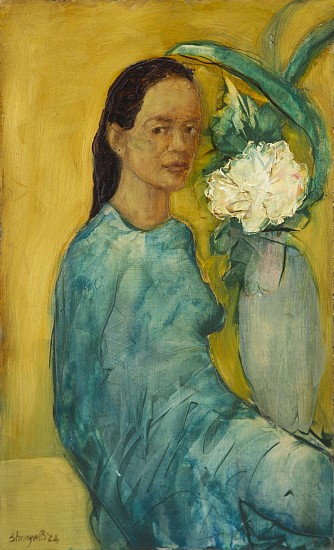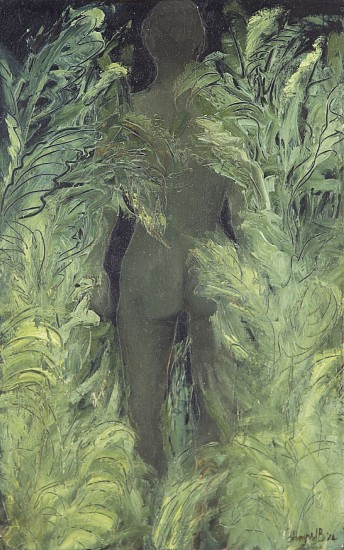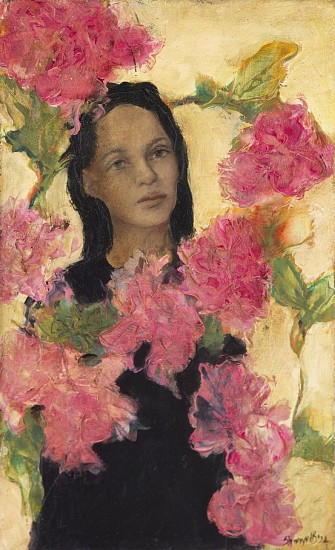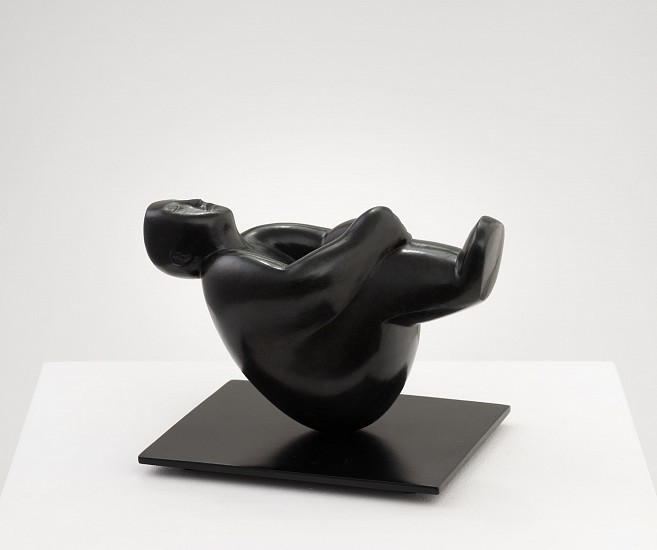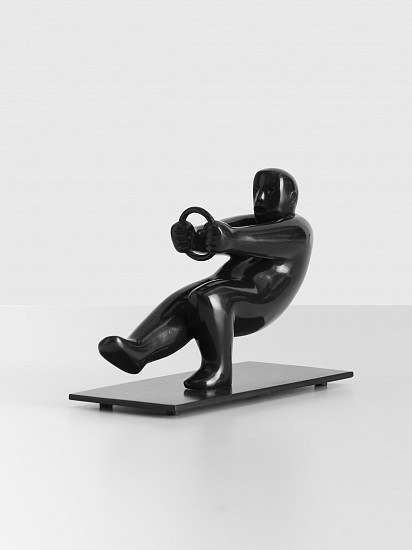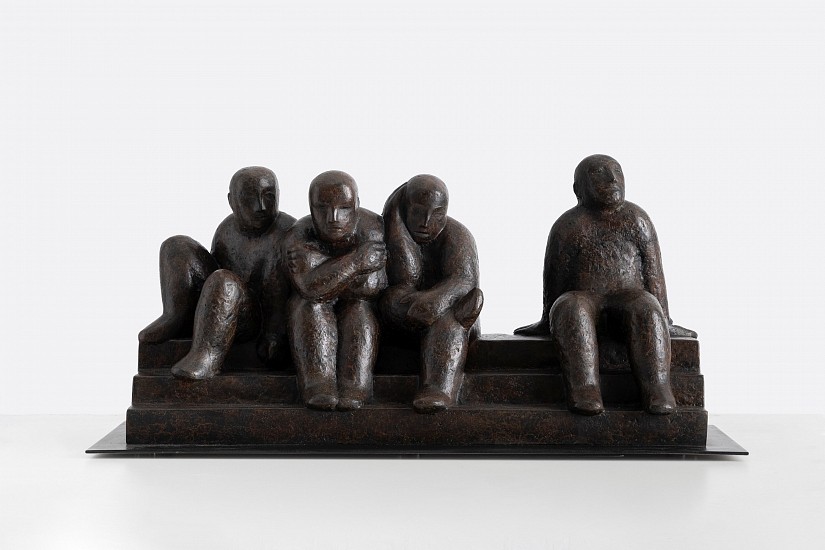10 YEARS | SUMMER 2025




SANELL AGGENBACH, Within / Without
Bronze, 63 x 66 x 63 cm
Sanell Aggenbach’s work is as illusive and ethereal as her subjects. Whether she is delving in satirical cultural exorcisms (Graceland, 2009) or exploring intimate portraiture of archived negatives (Sub Rosa, 2008), Aggenbach’s work retains a strange intimacy, despite the anonymity of her subjects. The emphasis of her work relates to visual trickery and plays on subterranean elements. Her most recent paintings offer an ambiguous open-endedness, employing a restrained palette of corroded process colours.




BEEZY BAILEY, Love and Flowers for the Four Horses
Oil on canvas, 200 x 150 cm
Beezy Bailey says he creates art “as a balm for a mad world – a corrective for our most lamentable human qualities, including a planet brutalized by extremes of wealth and poverty, environmental ignorance and negligence.” Many of his works emanate from his abiding concern with the Anthropocene, the present epoch characterized as the time in which the collective activities of Homo sapiens began to substantially alter the earth’s surface, atmosphere, oceans, and systems of ecological recycling.



BEEZY BAILEY, Spring Sprong
Oil on canvas, 120 x 90 cm
Often Beezy Bailey’s works are accompanied by poems, such as the 2016 ‘1000 Year Dance Cure’, in which he exhorts the world to dance a new dance, to abandon that which does not serve us, and to embrace each other in our humanity, and the earth in her service to us. The sources of his imagery are elusive. In his own words: “Frozen dreams, images and legends enter from my subconscious, the realm of my imagination. I act as a conduit for visual messages greater than I am.”
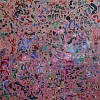




EMALIE BINGHAM, When You Finish Saving the World
Mixed media on canvas, 140 x 140 cm
Playfully juxtaposing, layering, and collaging marks as repeating motifs, Emalie Bingham explores endless possible outcomes, and considers a re-writing of normative attitudes towards grouping, orientation, and order. This improvised act of deconstructing and re-patterning recurring forms is inextricable from the concepts represented by each mark and evolving design.
The woven, encrypted shapes may act as windows into the neuroqueer experience, where thought, emotion, environment, and identity intersect, dissolve, and transform simultaneously on a single plane. These neuroqueer sensibilities implicit in her work create conceptual continuity between projects that may otherwise appear visually disparate.
ZARAH CASSIM, Fluster III
Oil on canvas, 80 x 60 cm
Zarah Cassim is an artist concerned with notions of perception. She uses themediums of painting, photography and sculpture to affect a viewer’s encounter with spatial illusion and reflect the creative filter through which she views the world.
Woven into the theme of unveiling the artifice of reality, is a concern with natural forms and spaces. It is in natural forms that she finds the vehicle for a sense of disorientation: the reflection of a chaotic or absurd world, which marks a breaking point for the human condition. Each work is a personal reflection for Cassim: a sensitive, romantic memory.



ZARAH CASSIM, Jungles
Oil on canvas, 70 x 50 cm
Each work is a personal reflection for Zarah Cassim: a sensitive, romantic memory. Some of her surfaces revel in the flat beauty of the painted mark, inviting the viewer to be seduced by the texture and material of her tool of illusion. Other works evoke a dream-like, ungraspable landscape that threatens to dissolve at any concrete claim over form.



ZARAH CASSIM, Pool III
Oil on canvas, 80 x 60 cm
Zarah Cassim is an artist concerned with notions of perception. She uses themediums of painting, photography and sculpture to affect a viewer’s encounter with spatial illusion and reflect the creative filter through which she views the world.
Woven into the theme of unveiling the artifice of reality, is a concern with natural forms and spaces. It is in natural forms that she finds the vehicle for a sense of disorientation: the reflection of a chaotic or absurd world, which marks a breaking point for the human condition. Each work is a personal reflection for Cassim: a sensitive, romantic memory.


ZARAH CASSIM, Whisper III
Oil on canvas, 70 x 50 cm
Each work is a personal reflection for Cassim: a sensitive, romantic memory. Some of her surfaces revel in the flat beauty of the painted mark, inviting the viewer to be seduced by the texture and material of her tool of illusion. Other works evoke a dream-like, ungraspable landscape that threatens to dissolve at any concrete claim over form.


ERIN CHAPLIN, Dahlias
Oil on canvas, 25 x 22 cm
Erin Chaplin’s work is a deeply personal and reflective. She draws her initial inspiration from her longstanding muse - nature, but reaches further – in reaction to Christian religious doctrine and in an exploration of human vulnerability – and into abstraction.


ERIN CHAPLIN, Pennygum
Oil on canvas, 30 x 25 cm
Erin Chaplin studies the relationship between the natural and the artificial in her work, striving to capture the poignancy of youth as it fades – fresh fruit and flowers as they slowly rot. In response to the challenging nature of the genre, the floral still-life works are executed in a combination of muted tones and unexpected, contrived colours. The contrast of these tones creates a dynamism in the work that entices and surprises the viewer.


ERIN CHAPLIN, Yellow tulips I
Oil on canvas, 23 x 21 cm
Erin Chaplin studies the relationship between the natural and the artificial in her work, striving to capture the poignancy of youth as it fades – fresh fruit and flowers as they slowly rot. In response to the challenging nature of the genre, the floral still-life works are executed in a combination of muted tones and unexpected, contrived colours. The contrast of these tones creates a dynamism in the work that entices and surprises the viewer.


ERIN CHAPLIN, Yellow Tulips II
Oil on canvas, 30 x 25 cm
Erin Chaplin’s work is a deeply personal and reflective. She draws her initial inspiration from her longstanding muse - nature, but reaches further – in reaction to Christian religious doctrine and in an exploration of human vulnerability – and into abstraction.




TENIQUA CRAWFORD, Meditation
Bronze, 38 x 21 x 21 cm
Teniqua Crawford is a multidisciplinary artist. Her work explores the human condition and its ephemeral nature through the female form. Crawford’s paintings of the figure captured in natural light are an expression of our pure being and essence. Her contained, muted, fragments serve as poetic symbols of the human condition.
Crawford paints and sculpts her subject from life while drawing from her inner world. Her creative process combines observation, memory, imagination and subconscious elements. Mark making resonates with her as an attempt to capture and give form to the ephemeral. She creates a sense of stillness, silence, and solitude in her works, drawn to these qualities as a pathway to the inner self. She has recently been creating abstracted figures in states of emergence that explore the interplay of presence and absence.
Her exploration of the human form as landscape seeks to connect humanity to the natural world. Her connection to nature is inspired by growing up along South Africa’s wild mountain coastline. The prehistoric Middle stone-age caves in this area shaped her perspective of the nature of time and existence.
Crawford recently exhibited during the 2024 Venice Biennale in major group exhibition Breasts.
Her works are in private collections in America, Asia, Australia, England, Europe, the Middle East and South Africa. She received a Bachelor of Arts from Princeton University and a Master of Fine Arts from Harvard University at the American Repertory Theatre, and the Moscow Art Theatre Institute [MXAT].



LUCA EVANS, Counterpunch
African mahogany, birch, cherry, kiaat, maple and walnut on pine, 40 x 27.8 cm
Luca Evans currently work from a studio in Paarden Eiland, where they utilise a hit-and-miss experimental approach to carpentry and marquetry. Their pop-ish work plays with ideas around language, failure, mishap and humour. Text and object are assembled interchangeably. Luca’s practice employs a cut and paste approach. They work with marquetry, an archaic woodworking method in which thin pieces of wood are assembled like jigsaw puzzles. Although they work predominantly with wood, their practice is intercepted with moments of print, animation and painting.


LUCA EVANS, Knockoff
African mahogany, birch, cherry, kiaat, maple, meranti, teak, walnut, wenge, yellow wood and aluminium on pine, 26 x 22.4 x 7 cm
Luca Evans currently work from a studio in Paarden Eiland, where they utilise a hit-and-miss experimental approach to carpentry and marquetry. Their pop-ish work plays with ideas around language, failure, mishap and humour. Text and object are assembled interchangeably. Luca’s practice employs a cut and paste approach. They work with marquetry, an archaic woodworking method in which thin pieces of wood are assembled like jigsaw puzzles. Although they work predominantly with wood, their practice is intercepted with moments of print, animation and painting.



LUCA EVANS, Man on train sneezes, whispers "bless me"
cotton rag canvas and house paint, 43.5 x 34.5 cm
Luca Evans currently work from a studio in Paarden Eiland, where they utilise a hit-and-miss experimental approach to carpentry and marquetry. Their pop-ish work plays with ideas around language, failure, mishap and humour. Text and object are assembled interchangeably. Luca’s practice employs a cut and paste approach. They work with marquetry, an archaic woodworking method in which thin pieces of wood are assembled like jigsaw puzzles. Although they work predominantly with wood, their practice is intercepted with moments of print, animation and painting.
| | Everard Read London



LUCA EVANS, The Crash
African mahogany, birch, cherry, kiaat, maple and walnut on pine, 30.5 x 43 cm
Luca Evans currently work from a studio in Paarden Eiland, where they utilise a hit-and-miss experimental approach to carpentry and marquetry. Their pop-ish work plays with ideas around language, failure, mishap and humour. Text and object are assembled interchangeably. Luca’s practice employs a cut and paste approach. They work with marquetry, an archaic woodworking method in which thin pieces of wood are assembled like jigsaw puzzles. Although they work predominantly with wood, their practice is intercepted with moments of print, animation and painting.


GUY FERRER, Invisible
Mixed media on canvas, 130 x 97 cm (51 1/8 x 38 1/8 in.)
Born in Algeria, Guy Ferrer is a French artist of Catalan and Italian descent. Over the past three decades, Ferrer has developed an international reputation as a painter and sculptor, with exhibitions in museums and galleries around the world. He has worked in Paris, Los Angeles and several foreign countries in the context of creating temporary studios in New York, Caracas, Lima, Beijing and Johannesburg. In 2012, the installation of his art studios in French Catalonia marked his return to the Mediterranean. His work, mainly dedicated to sculpture and painting, also explores writing and architecture. Its line of force and main themes are spirituality and the place of Man facing Time.


SASHA HARTSLIEF, Cool Light
Oil on canvas, 100 x 90 cm
Passionate about drawing from an early age, Sasha Hartslief is largely self-taught. Hartslief’s subjects are often viewed from a philosophical, deeply personal perspective, resulting in paintings that are emotionally charged, pensive in mood and considered in composition. Her subtle investigations into the human condition somehow strike a chord with us.


SASHA HARTSLIEF, Morning
Oil on canvas, 100 x 90 cm
Sasha Hartslief's brushstrokes are more diffuse than the precise, stylised techniques of the neo-classicists. Like the French Impressionists, she uses brushstrokes to evoke the transience of light, colour and movement. And like her Renaissance and Impressionist forebears, she employs everyday visual devices to explore the way in which atmospheric light and tonal modulations inform a surface, and to evoke atmospheres fraught with symbolic subtexts. But the transience of the captured moment is counterbalanced by the disciplined rigour of Hartslief's technique and painterly process. She admits to being "obsessively skills-driven and consumed" by her work. Each image becomes a formal study in light, contour and line.




SASHA HARTSLIEF, Sheer Curtain
Oil on canvas, 95 x 75 cm
"I defer to the classical Masters for inspiration," says Sasha Hartslief, who admits to placing images painted by the 19th-century American Impressionist, John Singer Sargent, next to her easel while she paints. Her muses include the 19th-century neo-classicist, Jean-Auguste-Dominique Ingres, whose draughtsmanship and linear dexterity provide formal inspiration for her works.



SWAIN HOOGERVORST, Flowers I
Oil on canvas, 59 x 46 cm
‘My paintings draw their inspiration from a photographic starting point. My intention though is not to recreate a photograph, but rather to allude to what is referenced. My work deals a lot with memory and the recollection of time and events or encounters passed. I try to paint in a way that evokes the unreliability of memory but also the dream-like feeling we give it, especially if that memory is positive. Hence I paint in a way that is vague or potentially non-descriptive but which leaves visual cues as to what may or may not be there.’
- Swain Hoogervorst, 2024




SWAIN HOOGERVORST, Flowers III
Oil on canvas, 120 x 100 cm
‘My paintings draw their inspiration from a photographic starting point. My intention though is not to recreate a photograph, but rather to allude to what is referenced. My work deals a lot with memory and the recollection of time and events or encounters passed. I try to paint in a way that evokes the unreliability of memory but also the dream-like feeling we give it, especially if that memory is positive. Hence I paint in a way that is vague or potentially non-descriptive but which leaves visual cues as to what may or may not be there.’
- Swain Hoogervorst, 2024



SWAIN HOOGERVORST, Flowers in the Window III
Oil on canvas, 80 x 60 cm
‘My paintings draw their inspiration from a photographic starting point. My intention though is not to recreate a photograph, but rather to allude to what is referenced. My work deals a lot with memory and the recollection of time and events or encounters passed. I try to paint in a way that evokes the unreliability of memory but also the dream-like feeling we give it, especially if that memory is positive. Hence I paint in a way that is vague or potentially non-descriptive but which leaves visual cues as to what may or may not be there.’
- Swain Hoogervorst, 2024



SWAIN HOOGERVORST, Flowers IV
Oil on canvas, 80 x 60 cm
‘My paintings draw their inspiration from a photographic starting point. My intention though is not to recreate a photograph, but rather to allude to what is referenced. My work deals a lot with memory and the recollection of time and events or encounters passed. I try to paint in a way that evokes the unreliability of memory but also the dream-like feeling we give it, especially if that memory is positive. Hence I paint in a way that is vague or potentially non-descriptive but which leaves visual cues as to what may or may not be there.’
- Swain Hoogervorst, 2024



THONTON KABEYA, Rainy Day II
CHALK PAINT, WALNUT POWDER AND NEWSPAPER INK TRANSFER ON SCULPTED CANVAS, 78 x 63 cm
Through his art, Thonton Kabeya is searching for understanding and the answers to life's conundrums and, exploring the many layers that make humanity so rich. On one level, his work captures the essence of African cosmopolitanism. His figurative artworks are snapshots of moments and the ‘everydayness’ specific to a continent, and yet, they are still universally recognisable and relatable. Lovers dancing the Rumba, street scenes, young boys playing – life happens across Kabeya’s canvases. In comparison, his abstract pieces are deeply layered, built up and less obvious in their storytelling, but no less engaging and thought-provoking.


SPEELMAN MAHLANGU, Riding the Bull I (Maquette)
44 x 32.5 x 20 cm
Born in Johannesburg, South Africa, Speelman Mahlangu (1958-2004), was known as one of the "Big Five" in the Soweto School of Art group. He studied both sculpture and painting at the renowned Katlehong Art Centre, which was established in 1977 and a place of learning for many notable South African artists including Mmakgabo Helen Sebidi, Martin Tose and Simon Masilo. The centre grew out of a collection of individual artists such as Morningstar Motaung, Stanley Nkosi, Napo Mokoena and Lucas Sithole.


SPEELMAN MAHLANGU, Where we are at Now
Bronze, 40 x 32 x 13 cm
Mahlangu’s imagery is distinctly African and his work often encompasses a dreamworld with its roots in Ndebele tribal myths. His iconography draws on traditional practices inspired by his grandfather, who introduced him to the legends and symbolism of animals and ancestor sacrifice.
During his life, and following the end of apartheid, Mahlangu was profoundly interested in South Africa’s ‘homecoming’ to the African continent, and his work draws one into the realm of southern African icons of traditional life, depicted almost as hieroglyphics.


GERHARD MARX, A Smaller Volume
reconfigured map fragments and book cover with cotton paper, 51 x 51.5 cm
Gerhard Marx develops his projects through an engagement with pre-existent conventions and practices. This process entails careful acts of dissection and rearrangement, which allow the artist to engage the poetic potential and philosophical assumptions of his chosen material, developing original drawing, sculptural and performative languages



DENBY MEYER, View Towards Lion's Head
Acrylic on canvas, 60 x 80 cm
Denby Meyer's paintings often evoke fond memories and nostalgia. Perhaps you were on holiday and remember the feeling of deep relaxation while you sat on the beach, or chatted and laughed in a sidewalk cafe for hours without noticing the passing time – Denby’s paintings gently remind us of the way it felt to be there.




OLIVIA MUSGRAVE, Cavalcade
Bronze, 53 x 62 x 20 cm
Ideas for sculptures often come unexpectedly and without warning or they sometimes grow on me over time. ‘Cavalcade’ emerged as I was leaving the British Museum after an early morning Private View. I always try and pay a visit to the Parthenon Marbles if I am there, but on this occasion I was the only person in the gallery, just before the doors to the museum opened. The silence of that moment profoundly affected how I viewed what are, for me, familiar objects.
- Olivia Musgrave



OLIVIA MUSGRAVE, Crossing the Night Sky
Bronze, 39 x 59 x 15 cm
Olivia Musgrave's work is drawn both from life and from the imagination where she draws inspiration from Greek mythology, as well as influences from 20th Century Italian sculptors, including Marini, Martini, Greco and Manzu


OLIVIA MUSGRAVE, Home from the Pasture
Bronze, 40 x 44.5 x 24 cm
Olivia Musgrave's sculptures are not a literal interpretation, she has instead tried to reveal the life and relationships between the men and women and their animals. As with many mythological stories these things are often intimately entwined, something which has
formed a large part of her work over the years.



BLESSING NGOBENI, Us and Them II
Mixed media on paper, 110 x 110 cm
Blessing Ngobeni was born in the small town of Tzaneen, located in the largely rural Limpopo province of South Africa. He moved to the Johannesburg metropolis at a very young age, where he experienced many hardships, from living on the streets, to serving time in prison.
Ngobeni made the corruption, incompetence and duplicity of current South African ruling elite the subjects of his art. He tackles the disconcerting consequences of betraying democratic ideals, the failure to learn from historical tragedies and the expanding gap between the rich and poor. This critique is informed by Ngobeni’s own experience, the hardships and challenges he had to confront as a child and adolescent. As a result of his exceptional work and dedication to his practice, Ngobeni received the highly-prestigious Standard Bank Young Artist Award for the Visual Arts in 2020.


RICARDO NIEUWOUDT, The Landing
Mixed media, 28 x 34 cm
"My art focus and interest were stimulated throughout my school years, especially due to my reading of graphic novels and comics, this has also awakened my imagination.
What drew my attention the most was the artist's ability to draw expressions and movement of the charactors. Looking at these images was to me a visual feast, I would scan these graphics very carefully in order to redraw and paint these images, this again stimulated my imagination.
My influence are the renaissance time period and ancient art effects, I also admire the works of great artists such as da Vinci, Monet, Renoir, Andy Warhol and South African painter John Meyer, as well as Willie Bester.
My style of paint varies from expressionistic to realistic and surrealistic."
- Ricardo Nieuwoudt
WILLIAM PEERS, Forelle
Carrara marble, hand carved, 46 x 62 x 25 cm
William Peers' earliest carvings were figurative and followed the long history of English stone carving brought to prominence by Henry Moore and Eric Gill.
In the 1990s Peers moved to Cornwall and there followed a period of fifteen years where he exclusively carved relief sculptures in Hornton Stone. Over time his work has become increasingly abstract. In 2007 he created a large series of work in Portuguese marble. The change of material had a dramatic effect on the style of his work. In 2010 he embarked on a series: 100 Days: Sketched in Marble in which he carved a marble sculpture each day for one hundred days. Working repeatedly within a time limit led him to a bolder approach to carving. Recently the relationship between positive and negative shapes has become an interest, and several larger works for the landscape have seen a dramatic change in scale in his work. Two of his monumental sculptures are permanently displayed at Linthwaite House in Britain’s Lake District as part of the Leeu Hotel Group’s collection.



LIONEL SMIT, Intervals of Form
Oil on linen, 120 x 100 cm
Lionel Smit is best known for his contemporary portraiture executed through monumental canvases and sculptures. Perhaps more than anything else, Smit’s work is defined by a profound and ongoing dialogue between sculpture and painting.
A multidisciplinary artist, each of Smit’s works offers us an entry point into the variety and richness that lies beneath every face we encounter in life, whether applied in bronze or in paint. While retaining their austerity and meditative aesthetic, Smit's figures remain highly charged with the emotive and gestural energy of his creative process


LIONEL SMIT, Refracted Form
Oil on linen, 90 x 80 cm
Lionel Smit’s paintings begin with abstract lines and swathes of colour that establish a foundation for the subsequently overlaid image of a face or bust – in most cases of anonymous models from the Cape Malay community. For Smit, the Cape Malay woman epitomises hybrid identity within a South African context and reflects the fragmentation of identity within our increasingly globalised world.



PENELOPE STUTTERHEIME, Weaving (summer) I
Oil on canvas, 110 x 110 cm
Depicting inner landscapes has long been South African artist Penelope Stutterheime’s preoccupation. Drawing inspiration from dreams and the unconscious, her layered and textured oil paintings use impasto and intensely vibrant colour to create mesmerising abstract works.


PENELOPE STUTTERHEIME, Weaving (summer) II
Oil on canvas, 110 x 100 cm
Conveyed through hue and form, the images are a representation of transformation. Penelope Stutterheime's paintings are a portrayal of her own inner spiritual processes, while also interrogating universal consciousness.


PENELOPE STUTTERHEIME, Weaving (summer) III
Oil on canvas, 80 x 160 cm
The work reveals a slow unfolding, and a weaving together of states of being. Daniel C. Wahl wrote that “weavers are healers of the unbroken whole – connecting people and place in elegant tapestries of shared meaning and visions of a world that works for all.” My practice engages actively with layering the literal passage of time and formal artistic considerations onto one symbolic surface. The choice of colours represents my own mindscape; in turn I hope to reflect on larger considerations, offering a reconnection and weaving together of humanity’s mindfulness and beyond.
- Penelope Stutterheime


PENELOPE STUTTERHEIME, Weaving (summer) IV
Oil on canvas, 125 x 130 cm
Depicting inner landscapes has long been South African artist Penelope Stutterheime’s preoccupation. Drawing inspiration from dreams and the unconscious, her layered and textured oil paintings use impasto and intensely vibrant colour to create mesmerising abstract works.
Conveyed through hue and form, the images are a representation of transformation. Her paintings are a portrayal of her own inner spiritual processes, while also interrogating universal consciousness.




ANGUS TAYLOR, She as the poet, and the poet as the witness (bust)
bronze, hematite, tiger-iron, Nguni stone (Swaziland), Barberton Greenstone Belt, 57 x 28 x 40 cm
Angus Taylor is known for his powerful, often monumental, sculptural works made from materials from his immediate environment - Belfast granite, red Jasper and the orange earth found near Johannesburg. Although he references traditional South African crafting techniques, his works are unmistakably contemporary. Taylor’s craftsmanship, bold and visionary approach and his original use of materials has resulted in many ambitious public and private commissions around the world.


TAFADZWA TEGA, Vamagirasi
Mixed media on canvas, 160 x 140 cm
The narrative expectations and contradictions of the diaspora experience are the central subject of Zimbabwean-born artist Tafadzwa Tega’s socio-political portraits of immigrants and immigrant life.
‘My work speaks to the struggles and dreams of the people of Zimbabwe. Political and economic instability over several decades has forced many Zimbabweans, including myself and some family members, to emigrate. Finding themselves in foreign countries – and, often, subjected to poor working and living conditions – Zimbabweans learn how to make ends meet while, at the same time, not forgoing ambition. These opposing currents – joy and desire on the one hand; exploitation and alienation on the other – often come to be represented in photographs. In these photographs, people dress their best; they choose glamorous settings for backgrounds; they pose. My paintings are based off of these photographs, conveying my countrymen’s resilience and determination to live (or, at least, to project) a better life.’
- Tafadzwa Tega


MBALI TSHABALALA, Ethereal Roots
Mixed media on paper, 50 x 35.5 cm
"My work examines the systems that shape us – societal and governmental structures that claim to enforce, embody or distort order. Through my art, I explore how order can be interpreted, dismantled and reimagined, weaving both personal and universal reflections into this inquiry. As a woman, my experience within these systems is shaped by a constant tension between imposed structures and the resilience required to navigate them. Women, particularly in spaces like Johannesburg, are often tasked with holding together fragile frameworks while adapting to instability and chaos. This duality informs my perspective, where the act of creating becomes both a reclamation and a reimagining of order. Downtown Johannesburg, alive in its contradictions, reflects these dynamics. Fleeting moments of balance and structure emerge from the city’s relentless energy – a harmony found in chaos. This interplay mirrors the rhythms of nature, where fractals, cycles and symmetry reveal a hidden organization that holds chaos and balance in tension. These patterns also speak to a deeper, spiritual order – a profound alignment within the universe where resilience and transformation become acts of quiet power."
- Mbali Tshabalala



MBALI TSHABALALA, Indaleko
Mixed media on paper, 50 x 53 cm
Mbali Tshabalala is a multidisciplinary artist whose work embodies thematic expressions of identity juxtaposed with society’s often invisible expectations. Tshabalala’s work deals with recurring themes related to existential dialogue and an inquiry into external influences that inform her existence as a young South African woman of Xhosa and Swazi descent. Tshabalala is a curator and arts entrepreneur, and her work further explores notions of mental wellness in black societies, particularly in black women. Although historically burdened with many inequalities, black women are often expected to be of limitless resilience, tenacity and to embody ‘The Strong Black Woman’ persona




ANDRZEJ URBANSKI, A053 / 103 / 90 / 23
Acrylic and spray paint on canvas, 163 x 143 cm (64 1/8 x 56 1/4 in.)
“I believe I can be better than the machine.” - Andrzej Urbanski
The street runs deeply in his blood. Andrzej Urbanski left his days of full-time “train bombing” back in Berlin where he started writing in his teens and now creates large, shimmering, optically bending spaces composed from the architectural squares, triangles and hexagons of today’s contemporary built environment.
His years as an undergraduate student in the newly de-walled Berlin was a time of full-time devotion to graffiti for this Polish-born but Germany based artist. It was only after he had received his BA in Communication and Graphic Design (BTK-FH, Berlin) (2010) and he set off to complete an MFA at the University of Art and Design in Lausanne, Switzerland (2012), that Urbanski left the train yards behind to pursue a more traditional form of painting.
Urbanski’s works are a culmination of that biography, a testament to abstract art as a direct engagement with the world, not a withdrawal from it.



SHANY VAN DEN BERG, Short Stories 45
Mixed media on board, 26 x 16 cm
Shany van den Berg's artistic practice stems from her life as a woman, mother and professional artist.
Renowned for her technical acumen, subtle symbolism and agility in shifting between portraiture, figurative, abstraction and sculptural work, she explores the critical contemporary themes of womanhood, identity, family, and connectedness to Mother Earth.



SHANY VAN DEN BERG, Short Stories 46
Mixed media on board, 26 x 16 cm
Shany van den Berg reconstitutes her stream of consciousness as both fable and history, binding together a layered ‘map’. This serves as both a solitary interior landscape of self-reflection and the more universal language of humanity's journey through one’s life.
Shany van den Berg’s artworks poignantly remind one that we are each unique but also inescapably part of one human race and planet.



SHANY VAN DEN BERG, Short Stories 52
mixed media on vintage linen, 26 x 16 cm
Shany van den Berg's artistic practice stems from her life as a woman, mother and professional artist.
Renowned for her technical acumen, subtle symbolism and agility in shifting between portraiture, figurative, abstraction and sculptural work, she explores the critical contemporary themes of womanhood, identity, family, and connectedness to Mother Earth.


SHANY VAN DEN BERG, Short Stories 53
Mixed media on board, 26 x 16 cm
Shany van den Berg reconstitutes her stream of consciousness as both fable and history, binding together a layered ‘map’. This serves as both a solitary interior landscape of self-reflection and the more universal language of humanity's journey through one’s life.
Shany van den Berg’s artworks poignantly remind one that we are each unique but also inescapably part of one human race and planet.



SHANY VAN DEN BERG, Short Stories 61
Mixed media on board, 26 x 16 cm
Shany van den Berg's artistic practice stems from her life as a woman, mother and professional artist.
Renowned for her technical acumen, subtle symbolism and agility in shifting between portraiture, figurative, abstraction and sculptural work, she explores the critical contemporary themes of womanhood, identity, family, and connectedness to Mother Earth.



SHANY VAN DEN BERG, Short Stories 64
Mixed media on board, 26 x 16 cm
Shany van den Berg reconstitutes her stream of consciousness as both fable and history, binding together a layered ‘map’. This serves as both a solitary interior landscape of self-reflection and the more universal language of humanity's journey through one’s life.
Shany van den Berg’s artworks poignantly remind one that we are each unique but also inescapably part of one human race and planet.


SHANY VAN DEN BERG, Short Stories 66
Mixed media on board, 26 x 16 cm
Shany van den Berg's artistic practice stems from her life as a woman, mother and professional artist.
Renowned for her technical acumen, subtle symbolism and agility in shifting between portraiture, figurative, abstraction and sculptural work, she explores the critical contemporary themes of womanhood, identity, family, and connectedness to Mother Earth.



SHANY VAN DEN BERG, Short Stories 71
Mixed media on board, 26 x 16 cm
Shany van den Berg reconstitutes her stream of consciousness as both fable and history, binding together a layered ‘map’. This serves as both a solitary interior landscape of self-reflection and the more universal language of humanity's journey through one’s life.
Shany van den Berg’s artworks poignantly remind one that we are each unique but also inescapably part of one human race and planet.



BARBARA WILDENBOER, The Oxford Book of English Verse
Altered book (hand-cut), 46.5 x 51.5 cm
Barbara Wildenboer uses a combination of analogue and digital processes to create sculptural artworks that primarily consist of collage, photo and paper-construction as well as digitally-animated photographic sculpture. Wildenboer also creates delicately-cut altered books which often contain maps, atlases and scientific subject matter, sometimes using images from the book as central elements to her pieces. Imagery and words become components of the larger designs, as she crafts new visual narratives from the raw material.



FLORIAN WOZNIAK, Dreamer (small maquette)
Bronze, 17.5 x 11.5 x 9 cm
For more than three decades Florian Wozniak has worked independently as a contemporary artist in South Africa. Working primarily in bronze, the artist’s smooth, figurative forms feel rooted to the earth and convey a powerful serenity. His sculptures are by turns tender and endearing, playful and witty; his characters often evoking pathos or humour.
Wozniak seeks transcendence through his work, a release from the constraints of the corporeal. This counterpoint is explored in the interplay between mass, weight, volume, and structure on the one hand, and fluidity, motion and grace on the other. Wozniak’s Dreamer curls in on himself but his gaze his skywards.
Optimism is implicit in every piece Wozniak sculpts and is palpable in the finished object. It is no surprise that he identifies so strongly with the sentiment of 20th century, Italian sculptor, Arturo Martini, when he said, ‘In this Babylon, where everyone has lost [their] senses, my sculpture could bring them some joy in its clarity and vibracy.'


FLORIAN WOZNIAK, Hard Drive (miniature)
Bronze, 18 x 23 x 10.5 cm
Florian Wozniak seeks transcendence through his work, a release from the constraints of the corporeal. This counterpoint is explored in the interplay between mass, weight, volume, and structure on the one hand, and fluidity, motion and grace on the other.
Optimism is implicit in every piece Wozniak sculpts and is palpable in the finished objects. His sculptures are by turns tender and endearing, playful and witty; his characters often evoking pathos or humour. It is no surprise that Wozniak identifies so strongly with the sentiment of 20th century, Italian sculptor, Arturo Martini, when he said, ‘In this Babylon, where everyone has lost [their] senses, my sculpture could bring them some joy in its clarity and vibrancy.’





FLORIAN WOZNIAK, Waiting (Large)
Bronze, 47.5 x 103 x 40 cm
Florian Wozniak seeks transcendence through his work, a release from the constraints of the corporeal. This counterpoint is explored in the interplay between mass, weight, volume, and structure on the one hand, and fluidity, motion and grace on the other.
Optimism is implicit in every piece Wozniak sculpts and is palpable in the finished objects. His sculptures are by turns tender and endearing, playful and witty; his characters often evoking pathos or humour. It is no surprise that Wozniak identifies so strongly with the sentiment of 20th century, Italian sculptor, Arturo Martini, when he said, ‘In this Babylon, where everyone has lost [their] senses, my sculpture could bring them some joy in its clarity and vibrancy.’





























































